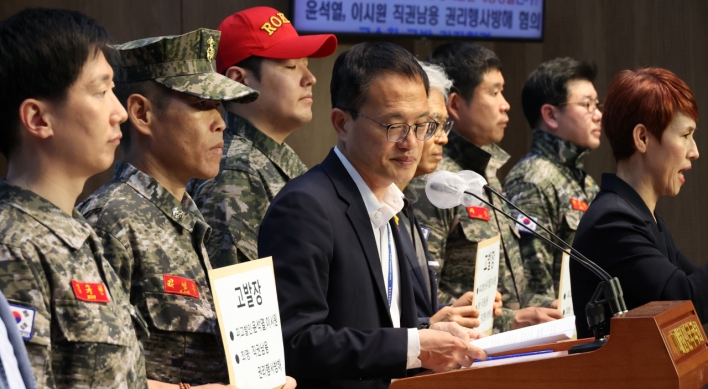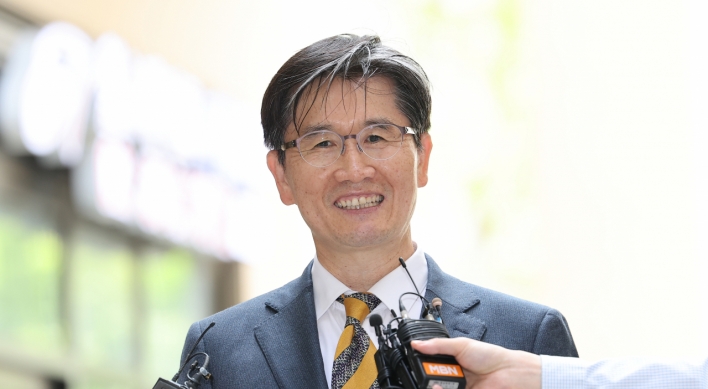More than 100 days have passed since the multiple labor union system went into effect on July 1. According to the Ministry of Employment and Labor, a total of 498 new unions were established during the first 100 days. These unions appear to be already exerting palpable influence on Korea’s labor movement.
The most striking aspect of the new unions is that an overwhelming majority of them ― 86 percent ― have chosen to remain independent without joining either of the nation’s two militant umbrella unions, the Korean Confederation of Trade Unions and the Federation of Korean Trade Unions.
This is not surprising, given that 73 percent of the new unions were established by unionists who broke away from the existing KCTC- or FKTU-affiliated unions. They split from these unions mainly because they were unhappy with their emphasis on violent political struggles in disregard of worker welfare.
Hence these new unions focus more on enhancing worker satisfaction and distance themselves from political campaigns. Their rational approach has resonated with unionists. In many worksites, they have already attracted more than a half of union members and emerged as the representative unions with the right to engage in collective bargaining with management.
The rapid rise of newly created unions has begun to pressure KCTC and FKTU unions to rebalance priorities and mend their ways. This is evidenced by a drop in strike activities. According to the ministry, labor strikes took place at 24 companies during the three months since July, a 27 percent drop compared with the same period a year ago. The number of working hours lost to strikes also fell by 13,000.
Going forward, KCTC and FKTU unions are expected to face growing pressure to prioritize worker welfare and refrain from staging strikes or mobilizing their members for politically motivated rallies. If they continue to do so, it would be at their own peril.
Yet the KCTC and FKTU still maintain their strong grip on the nation’s two most powerful union organizations ― the Federation of Korean Metalworkers’ Trade Unions and the Korea Financial Industry Union. Unions belonging to these industrial groups are so well organized that new unions are unlikely to challenge them for the time being.
Nevertheless, it can be said safely that the multiple union system has taken root in Korea, providing the nation with an opportunity to reshape the labor movement. Whether the labor movement evolves in a positive direction or not depends a great deal on how companies as well as labor leaders respond to it.
Companies may feel the temptation to use the multiple union system as a means of weakening existing unions. But this is a shortcut to ruin. If they attempt to manipulate newly established unions, they would do harm for themselves as well as the nation by provoking a strong labor backlash.
The most striking aspect of the new unions is that an overwhelming majority of them ― 86 percent ― have chosen to remain independent without joining either of the nation’s two militant umbrella unions, the Korean Confederation of Trade Unions and the Federation of Korean Trade Unions.
This is not surprising, given that 73 percent of the new unions were established by unionists who broke away from the existing KCTC- or FKTU-affiliated unions. They split from these unions mainly because they were unhappy with their emphasis on violent political struggles in disregard of worker welfare.
Hence these new unions focus more on enhancing worker satisfaction and distance themselves from political campaigns. Their rational approach has resonated with unionists. In many worksites, they have already attracted more than a half of union members and emerged as the representative unions with the right to engage in collective bargaining with management.
The rapid rise of newly created unions has begun to pressure KCTC and FKTU unions to rebalance priorities and mend their ways. This is evidenced by a drop in strike activities. According to the ministry, labor strikes took place at 24 companies during the three months since July, a 27 percent drop compared with the same period a year ago. The number of working hours lost to strikes also fell by 13,000.
Going forward, KCTC and FKTU unions are expected to face growing pressure to prioritize worker welfare and refrain from staging strikes or mobilizing their members for politically motivated rallies. If they continue to do so, it would be at their own peril.
Yet the KCTC and FKTU still maintain their strong grip on the nation’s two most powerful union organizations ― the Federation of Korean Metalworkers’ Trade Unions and the Korea Financial Industry Union. Unions belonging to these industrial groups are so well organized that new unions are unlikely to challenge them for the time being.
Nevertheless, it can be said safely that the multiple union system has taken root in Korea, providing the nation with an opportunity to reshape the labor movement. Whether the labor movement evolves in a positive direction or not depends a great deal on how companies as well as labor leaders respond to it.
Companies may feel the temptation to use the multiple union system as a means of weakening existing unions. But this is a shortcut to ruin. If they attempt to manipulate newly established unions, they would do harm for themselves as well as the nation by provoking a strong labor backlash.










![[Weekender] How DDP emerged as an icon of Seoul](http://res.heraldm.com/phpwas/restmb_idxmake.php?idx=644&simg=/content/image/2024/04/25/20240425050915_0.jpg&u=)

![[Today’s K-pop] NewJeans' single teasers release amid intrigue](http://res.heraldm.com/phpwas/restmb_idxmake.php?idx=644&simg=/content/image/2024/04/26/20240426050575_0.jpg&u=)





![[Herald Interview] Mistakes turn into blessings in street performance, director says](http://res.heraldm.com/phpwas/restmb_idxmake.php?idx=652&simg=/content/image/2024/04/28/20240428050150_0.jpg&u=)
